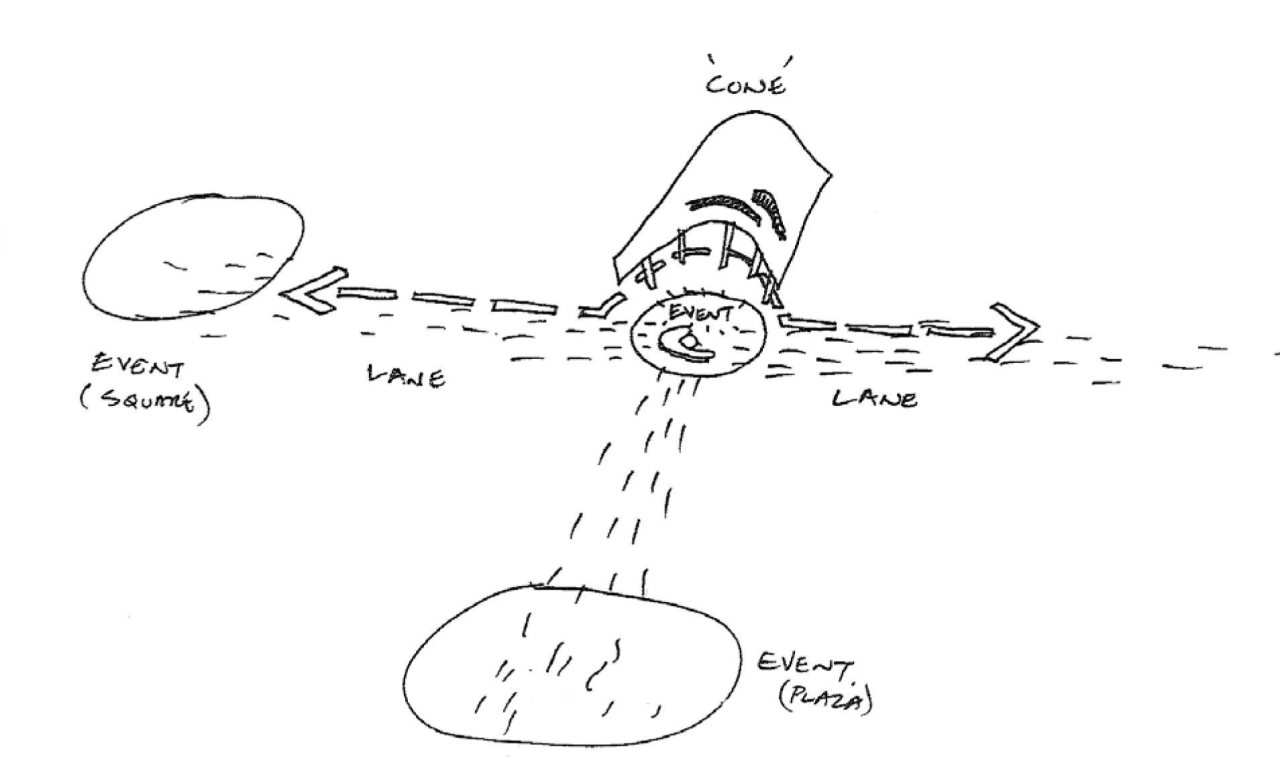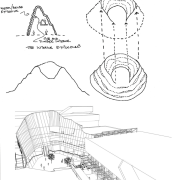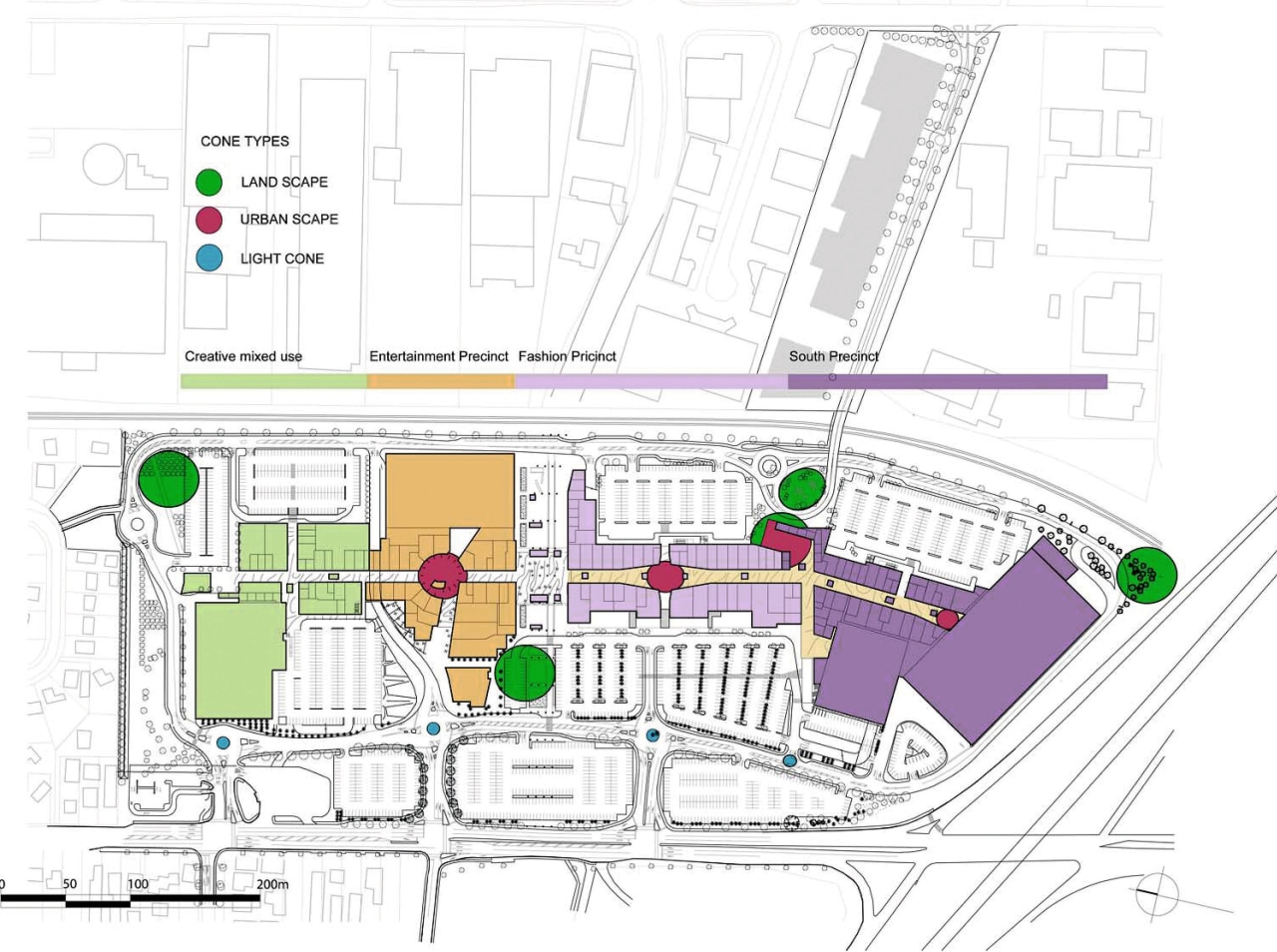Wielding confluence
Located at Auckland City's crossroads, Sylvia Park is a concept that both local and international retailers have hastened to participate in
FORESIGHT IS a remarkable thing. But perhaps a more valuable quality may be insight. Back in 1838, when James Hamlin bought a block of land, subsequently named Waipuna Farm, he would have struggled to predict the success stories of the next 50-odd years, let alone the developments of a further 160.
Sylvia Park today is a massive retail centre that stands on the portion of Waipuna Farm that in 1882 was a highly successful stud farm of the same name. Taking its title from the mare Sylvia, dam of the first New Zealand Melbourne Cup winner Martini-Henry, Sylvia Park Mark I reached its zenith with Carbine an inaugural inductee into the Australian Racing Hall of Fame.
Today, New Zealand's latest, largest and quite possibly most diverse shopping centre sits on a site steeped in history; a site of strategic importance to all who have resided upon it. This is an exclusive club that includes early Maori settlers, European farmers, the New Zealand government and even, during World War II, the United States Army.
Purchased by Kiwi Income Property Trust (KIPT) in two chunks, one in 1995 and the other in 1998, the 24ha site was formerly most familiar to Aucklanders for the symmetrical roof lines of the old US army sheds that stood there.
It was a location, almost equidistant between Auckland's two harbours, with proximity to cities north and south and connections to major arterial routes, that interested KIPT greatly. However, with re-zoning necessary, acquiring the land wasn't so much a matter of foresight, but insight and patience, says Kiwi's chief executive Angus McNaughton.
"Kiwi purchased part of the site in 1995, with the balance in 1998, for very similar reasons to those of the New Zealand Government: its accessibility, via road and rail, and its exposure to the greater Auckland metropolitan area. Fifty percent of Auckland's population live within a 20 minute drive," he says.
That fifty percent is a number that looks likely to further increase with the unveiling of Auckland City Council's Tamaki Edge initiative. New Zealand's biggest urban renewal project, Tamaki Edge fits into Auckland City's growth management strategy a strategy that will see investment of around $2 billion fuelling the economic growth of the area. This includes everything from new rail stations, revitalised town centres, a rapidly growing university technology park, and 2600 homes for up to 6000 residents in a 110-hectare former quarry site the largest residential master-planned community devised within Auckland City's boundaries.
For KIPT, Sylvia Park also represents an opportunity to establish a foothold in the profitable Auckland retail market.
"Sylvia Park is undoubtedly one of the Trust's flagship assets, further diversifying our portfolio and revenue streams. The retail sector of property investment has great prospects, but it can be difficult to establish a presence. Options for investment in existing centres appear rarely. Sylvia Park was an opportunity to start from scratch and get it right," says McNaughton.
The numbers stack up: Sylvia Park sits at the confluence of central, southern and eastern Auckland at the junction of the Southern Motorway and Mt Wellington Highway, with the South Eastern Arterial crossing above the middle of the site. Approximately 700,000 residents live within a 20 minute drive of Sylvia Park. Drive time analysis by Market Economics shows that within this 20 minute radius Sylvia Park has access to 35% more residents than St Lukes, 114% more than Botany Town Centre, and 29% more than Manukau City.
In the early stages, KIPT lodged submissions with the Auckland City Council to change zoning. After successfully defeating Environment Court submissions a plan change was granted for the project.
On a project of this magnitude many players have a vested interest. Compliance with the Auckland City Council's district plan meant incorporating set amounts of open and green spaces, and creating a mixed-use development that bore characteristics of a traditional town centre. Ten per cent, the set amount of dedicated leisure space recommended by the ACC, was a figure that eventually was almost doubled.
McNaughton says that KIPT's collaboration with the city council was close, due in part to Mt Wellington and Sylvia Park being acknowledged in the city's Growth Management strategy as an area of change.
Intensive consultation with Transit and the Auckland Regional Transport Authority was also necessary. The flyover above the development has been incorporated into the design, funding has been devoted to improving Mt Wellington Highway traffic flow, a train station is under construction for completion in early 2007, whilst a transportation hub for buses also features.
With zoning changed and transport plans in place, the company worked with a number of parties to design a comprehensive master plan.
"As the biggest brownfields development in Australasia, the site deserved something special," says McNaughton.
"It was very important to create something with scale, something that would be a draw card to consumers from a wide catchment, and to create something different, but not so different as to alienate visitors."
To get the design ball rolling, KIPT first enlisted US architects Gensler. The project was then taken on as a joint venture between Australian firm NH Architecture and Auckland firm Jasmax, explains Jasmax's Euan MacKellar.
"To give a little context, Gensler were brought on board to create a broad master plan. They then stepped back, and Australian firm NH Architects (NHA), who are retail specialists, came on board to add to the international flavour. Jasmax contributed local knowledge and a broad range of design skills."
NHA describes the project as a new generation of urban development, with a concept based on integration and connectivity. Rather than a single purpose shopping mall, the master plan brings together commercial, retail and public facilities on one site literally more than just a one-stop shop.
The southern precinct brings together a range of convenience, homeware and lifestyle venues in a series of robust architectural forms, while the fashion pavilion catches the style of contemporary design and culture.
The entertainment precinct is activated both day and night by a series of interconnecting public spaces. Finally, the creative mixed-use zone ensures a strong daily population on site.
As the South Eastern Arterial splits Sylvia Park almost in two, there was potential for the north and south appearing segregated, says MacKellar.
"Underneath is a 50m no-go zone with 7m easements either side. To avoid segregation, a series of bridging columns and pavilions form connections. To the south lies a completed retail precinct Stages I and II that features design motifs representative of aspects of Auckland's history and landscape. These comprise volcanic cones, flax, the colours and strata of the earth, and the roofs of US army sheds.
"The southern strip, next to the Southern Motorway, is anchored by The Warehouse. Here, motifs that are specific to both Mt Wellington and Auckland can be seen in the design," he says.
The Warehouse roof features abstract and colourful versions of Auckland's volcanic landscape, which also serve as screens for building services.
"Further cones occur at ground and roof levels throughout the centre, providing a uniquely Auckland theme. The entertainment precinct's large central cone is a lattice of steel, timber and coloured perspex in blacks and reds that reflect the colours of local scoria," says MacKellar. "Historically, volcanic cones have been used as beacon points, marking areas and helping people set their bearings."
The idea of capturing forms and acknowledging history and locale is woven into the fabric of the centre. The exposed aggregate walls of the southern precinct represent the site's original wetland, flax-covered origins. The passage of a historic stream under Sylvia Park is acknowledged by a series of bronze plaques, depicting aspects of the original flora and fauna, and distinct tiling.
The southern precinct roof form is an abstraction of the military sheds that once stood on site. Elsewhere, some of the colours used were taken from paintings by New Zealand landscape artists. Elevated, textured signage also dovetails with the architecture and clear walkways allow pedestrians to easily navigate their way through the centre.
As a marriage of convenience for retailers and shoppers, Sylvia Park is bearing fruit. Anecdotal customer numbers suggest that the concept has already been embraced by the buying public. And with KIPT promising that the best is still yet to come, Auckland's battle for the buck looks like it is just beginning to heat up.
Credit list
Owner
Pre-construction works
Other contractors
Mechanical and electrical consultants
Branding and signage
Reinforcing steel supplier
Aluminium composite panels
Landscaping
Design and construction, The Warehouse Extra
Fire and safety
Tiling
Birdproofing
department fit-outs
David Lawrence fit-out
Architects
Main contractor
Project manager and tenancy fit-out co-ordinator
Design management
Planning consultants
Structural steel construction and erection
Air conditioning
Fencing
Water features
Post-tensioned floor, The Warehouse Extra
Security
Service area doors
Life Pharmacy fit-out
Story by: Trendsideas
Home kitchen bathroom commercial design
Stretching out to nature
Weathered charm
Natural is always in style







